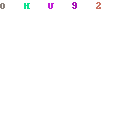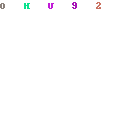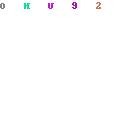Summary of Trojan horse Agent3.CJQI
Why is that? Here are the reasons listed:
- Trojan horse Agent3.CJQI is programmed with certain pivotal files that are almost the same with legit ones.
- Trojan horse Agent3.CJQI has the ability to open backdoor to download bunches of files for the cover work.
- Some components are downloaded by Trojan horse Agent3.CJQI to disable security settings, making security utilities work oddly.
- Even if you seemed to remove Trojan horse Agent3.CJQI successfully with certain program, but it will be only successful thoroughly after a reboot, however, you get a crash or blue screen when you try to reboot.
If you meet up with the difficulty when you are trying to remove Trojan horse Agent3.CJQI, you'll simply get a desirable reult if you ever swith to manual approach. Follow the steps below; should you get stuck during the procedures, you are welcome to start a live chat with Tee Support experts 24/7 online for professional help.
Malfunctions Spotted with Trojan horse Agent3.CJQI Around
- Computer Remains Sluggish.
- Multitask running fashion.
- Big files are found.
- Start menu program list not active.
- Anti-virus software detects it but just confined to quarantines it.
- Crashes from nowhere.
- Redirection happens sometime.
Manual Instruction to Show How to Eradicate Trojan horse Agent3.CJQI
Step1:Restart your system and get into the safe mode with networking As the computer is booting but before Windows launches, tap the "F8 key" continuously which should bring up the "Windows Advanced Options Menu" as shown below. Use your arrow keys to highlight "Safe Mode with Networking" option and press Enter key.

Step2:Please stop the processes listed below Press CTRL+ALT+DEL key to open Task Manager

random.exe
Step3:Go to the Registry Editor to delete all related entries listed below Click “Start” menu, hit “Run”, then type “regedit” click “OK”.


Related registry keys:
HKEY_CURRENT_USER\Software\Microsoft\Windows\CurrentVersion\Run “.exe”
HKEY_CURRENT_USER\Software\Microsoft\Windows\CurrentVersion\Run “”
HKEY_CURRENT_USER\Software\Microsoft\Windows\CurrentVersion\Internet Settings “CertificateRevocation” = ’0′
HKEY_CURRENT_USER\Software\Microsoft\Windows\CurrentVersion\Internet Settings “WarnonBadCertRecving” = ’0′
HKEY_CURRENT_USER\Software\Microsoft\Windows\CurrentVersion\Policies\ActiveDesktop
HKLM\SOFTWARE\Microsoft\Windows NT\CurrentVersion\Image File Execution “NoChangingWallPaper” = ’1′
Step4: Delete related files and folders
C:\\Windows\System32\svchost.exe -k LocalSystemNetworkRestricted
C:\Windows\system32\svchost.exe -k netsvcs
C:\Windows\system32\svchost.exe -k LocalService
C:\Windows\system32\svchost.exe -k NetworkService
C:\Windows\System32\spoolsv.exe
C:\Windows\system32\SearchFilterHost.exe
C:\Windows\sysWow64\SearchProtocolHost.exe
C:\Windows\system32\wbem\wmiprvse.exe
Video on How to Deal with Processes and Registries
Important note: manual removal ensures the desired result due to the original way in which the computer is built. Yet it needs strong knowledge of tech skills, otherwise it will result in none-access to Windows. Besides, take the time expanse you have it, it related files and registries could be different. If you find no luck after finishing the post, you are welcome to start a live chat with Tee Support experts 24/7 online for real-time help.

No comments:
Post a Comment